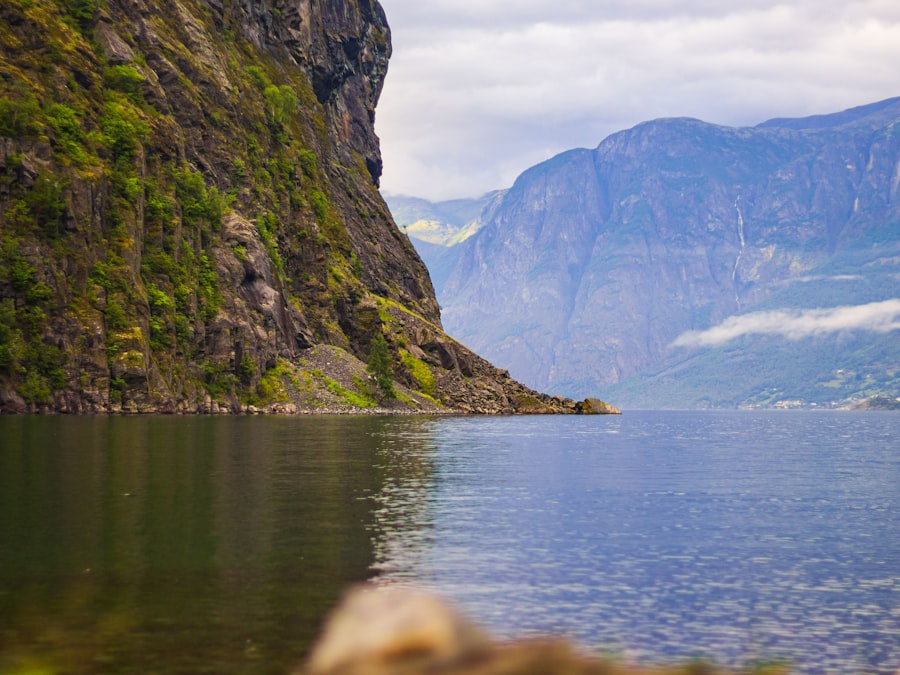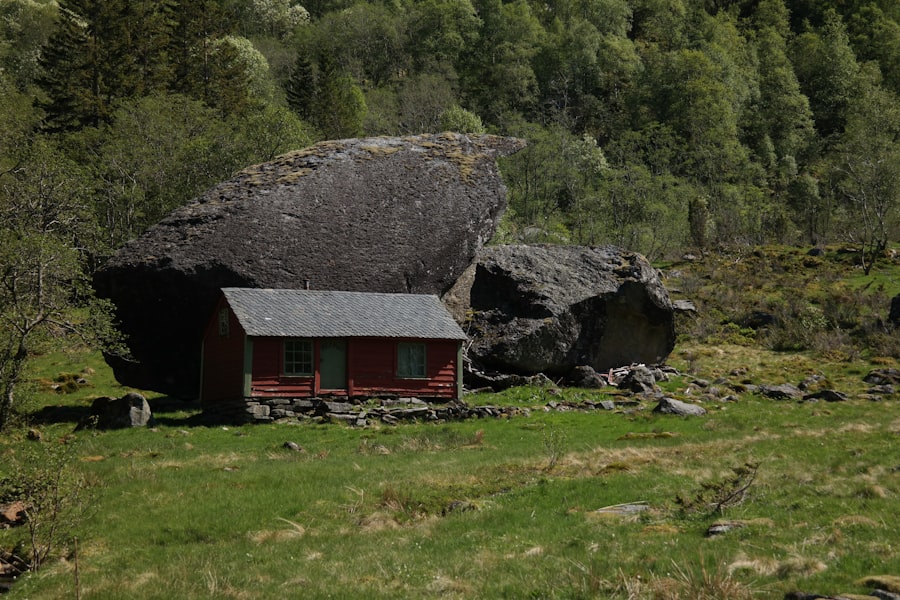When considering a move to Norway, it is essential to delve into the country’s climate and culture. Norway is renowned for its stunning natural landscapes, from majestic fjords to snow-capped mountains, but its climate can be quite varied. The coastal regions experience a milder climate due to the influence of the Gulf Stream, while the inland areas can be significantly colder, especially during the winter months.
Understanding these climatic nuances will help you prepare adequately for your relocation. Researching the average temperatures, precipitation levels, and seasonal changes will enable you to pack appropriately and adjust your lifestyle to suit your new environment. Culturally, Norway boasts a rich heritage that is deeply intertwined with its history and geography.
The Norwegians are known for their strong sense of community and appreciation for nature, which is reflected in their outdoor lifestyle. Familiarising yourself with local customs, traditions, and social norms will not only ease your transition but also enrich your experience in this beautiful country. Engaging with local communities, learning the language, and participating in cultural events can help you forge connections and feel more at home in your new surroundings. Book Your 1-Hour Relocation Strategy Session
Summary
- Research the climate and culture of Norway before moving to ensure you are prepared for the weather and understand the local customs and traditions.
- Pack essentials for the Norwegian weather, including warm clothing, waterproof outerwear, and sturdy footwear to stay comfortable in the changing climate.
- Sort and declutter your belongings before packing to make the moving process easier and to avoid bringing unnecessary items to your new home.
- Understand import restrictions and customs regulations to avoid any issues when bringing your belongings into Norway.
- Pack fragile items with care using appropriate packing materials and techniques to ensure they arrive at your new home safely.
Packing Essentials for the Norwegian Weather
Packing for Norway requires careful consideration of the weather conditions you are likely to encounter. The key to staying comfortable lies in layering your clothing. Start with moisture-wicking base layers that keep you dry, followed by insulating mid-layers such as fleece or wool, and finish with a waterproof and windproof outer layer.
This approach allows you to adapt to fluctuating temperatures throughout the day, especially if you plan on spending time outdoors. Don’t forget to include accessories like thermal gloves, hats, and scarves, as these can make a significant difference in keeping you warm during the colder months. In addition to clothing, it is wise to pack essential items that cater to Norway’s unique climate.
High-quality waterproof footwear is a must, particularly if you plan on exploring the countryside or engaging in outdoor activities like hiking or skiing. Consider bringing along a sturdy umbrella and a reliable raincoat, as rain can be frequent even in summer. Furthermore, investing in thermal blankets or sleeping bags can be beneficial if you intend to venture into more remote areas where temperatures can drop unexpectedly.
Sorting and Decluttering Your Belongings

Before embarking on your move to Norway, it is crucial to sort through your belongings and declutter effectively. This process not only lightens your load but also allows you to assess what items are truly essential for your new life. Begin by categorising your possessions into three groups: keep, donate, and discard.
This methodical approach will help you make informed decisions about what to take with you and what can be left behind. Remember that moving costs can escalate quickly, so reducing the volume of items you transport can lead to significant savings. As you sort through your belongings, consider the practicality of each item in relation to your new life in Norway.
Some items may hold sentimental value but may not serve a purpose in your new environment. Be honest with yourself about what you truly need and what can be let go. Donating items to local charities or selling them online can also provide a sense of closure as you prepare for this new chapter in your life.
Understanding Import Restrictions and Customs
Navigating import restrictions and customs regulations is a vital aspect of relocating to Norway. Each country has its own set of rules regarding what can be brought in, and Norway is no exception. Familiarising yourself with these regulations will save you time and potential headaches during the moving process.
Certain items may be prohibited or restricted, such as specific food products, plants, or animals. It is advisable to consult the Norwegian Customs website or contact their offices directly for comprehensive information on what you can bring into the country. Additionally, understanding the customs process will help ensure that your belongings arrive safely and without unnecessary delays.
You may need to provide documentation regarding the value of your items or proof of ownership for certain goods. Being well-prepared with all necessary paperwork will facilitate a smoother transition through customs and allow you to focus on settling into your new home.
Packing Fragile Items with Care
When it comes to packing fragile items for your move to Norway, extra care is essential to ensure they arrive intact. Begin by gathering appropriate packing materials such as bubble wrap, packing paper, and sturdy boxes designed for fragile items. Each delicate item should be wrapped individually in bubble wrap or packing paper before being placed in a box lined with cushioning material.
This extra layer of protection will help absorb shocks during transit and minimise the risk of breakage. It is also wise to label boxes containing fragile items clearly. Use bold lettering to indicate that the contents are delicate and should be handled with care.
Additionally, consider creating an inventory list of all fragile items packed away; this will not only help you keep track of them but also assist in unpacking once you arrive in Norway. Taking these precautions will give you peace of mind knowing that your cherished belongings are well-protected during the journey.
Organising Important Documents and Paperwork

As you prepare for your move to Norway, organising important documents and paperwork should be a top priority. This includes passports, visas, medical records, educational certificates, and any other essential documents that may be required for residency or employment in Norway. Create a dedicated folder or binder where all these documents can be stored securely yet remain easily accessible during your move.
In addition to physical copies, consider digitising important documents by scanning them and saving them on a secure cloud storage platform. This ensures that even if physical copies are lost or damaged during transit, you still have access to vital information. Keeping both physical and digital copies organised will streamline your transition process and provide peace of mind as you embark on this new adventure.
Choosing the Right Moving Boxes and Supplies
Selecting the right moving boxes and supplies is crucial for ensuring a smooth relocation experience to Norway. Start by assessing the quantity and type of items you need to pack; this will help determine how many boxes you’ll require and what sizes are most suitable. Opt for sturdy cardboard boxes that can withstand the rigours of transport; double-walled boxes are particularly effective for heavier items.
In addition to boxes, gather other packing supplies such as packing tape, bubble wrap, markers for labelling, and protective materials like foam peanuts or crumpled paper for cushioning fragile items. Investing in quality supplies will not only protect your belongings but also make the packing process more efficient. Consider purchasing specialised boxes for specific items like wardrobe boxes for clothing or dish packs for kitchenware; these can simplify packing and unpacking significantly.
Labeling and Organising Your Packed Items
Once you’ve packed your belongings into boxes, effective labelling and organisation become paramount. Clearly label each box with its contents and the room it belongs to; this will make unpacking much more manageable once you arrive in Norway. Using colour-coded labels for different rooms can further streamline the process by allowing movers or helpers to quickly identify where each box should go.
In addition to labelling boxes, consider creating an inventory list that details each box’s contents. This list can serve as a reference during unpacking and help ensure that nothing goes missing during transit. By taking the time to organise and label your packed items thoughtfully, you’ll set yourself up for a smoother transition into your new home.
When it comes to relocating to Norway, one of the most significant decisions you’ll face is whether to hire professional movers or tackle the packing yourself. Hiring professionals can alleviate much of the stress associated with moving; they possess the expertise and equipment necessary to handle heavy or delicate items safely. Additionally, professional movers often offer packing services that can save you time and effort during this busy period.
On the other hand, opting for DIY packing can provide a sense of control over the process and potentially save money on moving costs. If you choose this route, ensure that you allocate sufficient time for packing and enlist help from friends or family if needed. Ultimately, the decision should be based on your budget, timeline, and comfort level with handling the logistics of moving.
Avoiding Common Packing Mistakes
As you prepare for your move to Norway, being aware of common packing mistakes can help ensure a smoother experience. One frequent error is underestimating the amount of time required for packing; starting early allows for a more organised approach and reduces last-minute stress. Additionally, failing to use appropriate packing materials can lead to damaged items during transit; investing in quality supplies is essential.
Another common mistake is neglecting to label boxes adequately; without clear labels, unpacking can become a frustrating ordeal. Furthermore, overpacking boxes can lead to breakage or injury when lifting heavy loads; it’s better to use multiple smaller boxes than risk damaging your belongings or straining yourself physically. By being mindful of these pitfalls, you’ll set yourself up for a successful move.
Tips for Settling into Your New Home in Norway
Once you’ve arrived in Norway and unpacked your belongings, it’s time to focus on settling into your new home. Start by familiarising yourself with your neighbourhood; take walks around the area to discover local shops, parks, and amenities that will become part of your daily routine. Engaging with neighbours can also foster a sense of community; consider introducing yourself or attending local events to meet people.
Additionally, take advantage of resources available through local expat groups or community organisations that can provide support as you adjust to life in Norway. These groups often offer valuable information about navigating daily life, cultural differences, and social activities that can help ease your transition. To further enhance your relocation experience, consider scheduling a One-Hour Strategy Session with the Norway Relocation Group.
This session provides tailored advice on settling into your new environment effectively while addressing any specific concerns or questions you may have about living in Norway. Their expertise can prove invaluable as you embark on this exciting new chapter in your life!

